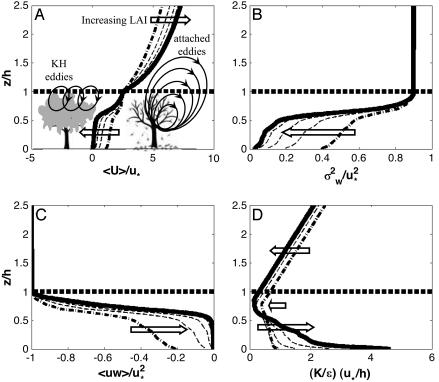Fig. 2.
Effects of LAI variation on major flow statistics needed by CELC. Increasing LAI (e.g., early spring to midsummer in temperate deciduous forests), indicated by the arrow, decreases mean horizontal wind velocity within the forest and has an opposite effect above the canopy (A). It also reduces the variance of the turbulent vertical velocity (B) and the turbulent covariance between horizontal and vertical winds (C), and decreases the so-called “relaxation time scale,” a measure of temporal organization of eddies in the vertical direction (D). The normalizing variables are the friction velocity above the canopy (u*) and canopy height (h). In A we also provide a schematic representation of the primary mechanism that enhances LDD in sparse (low LAI) versus dense (high LAI) canopies, in which the dominant eddy motion is through attached and KH eddies, respectively.

